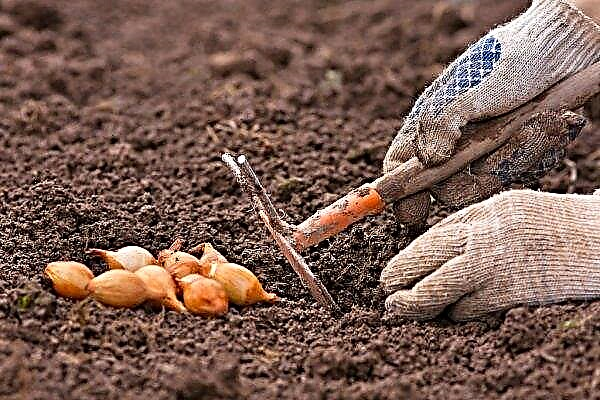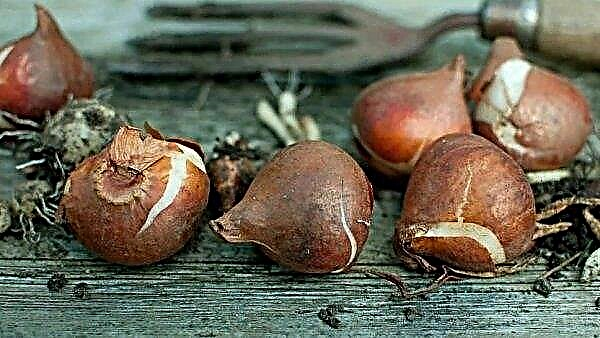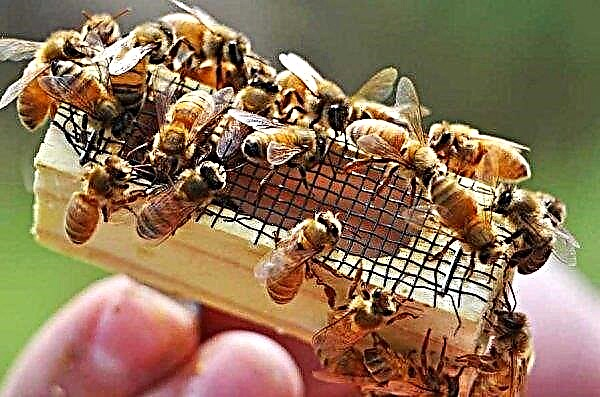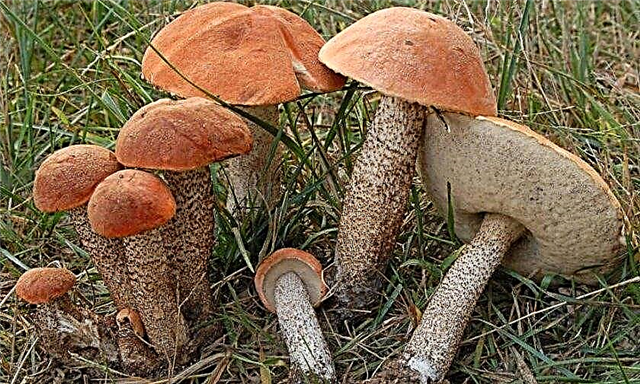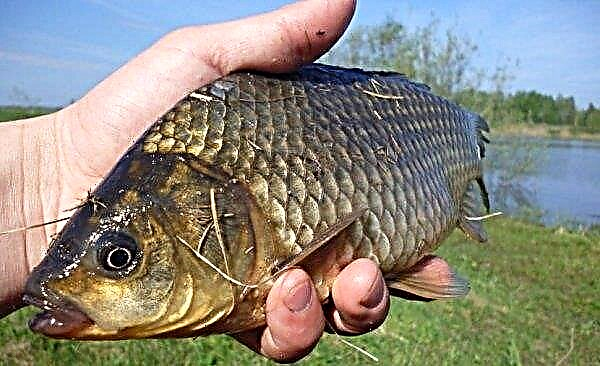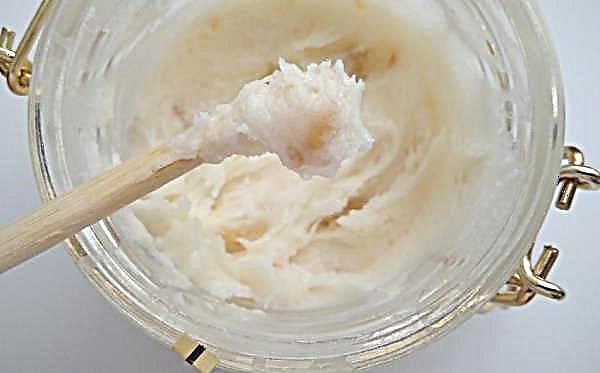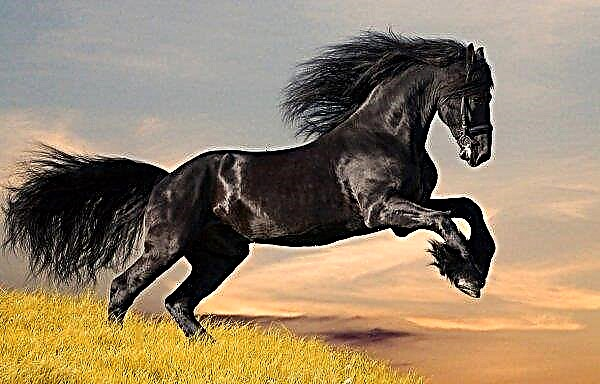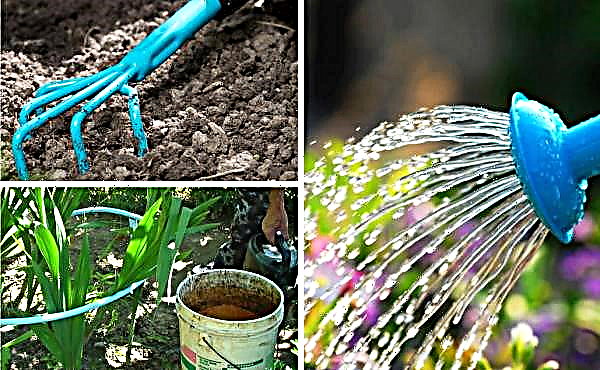No matter how well the farmers are engaged in breeding ducks, sometimes you still have to deal with various diseases. Still not fully grown ducklings are more susceptible to various ailments, so it is very important to recognize them in time and start treatment.
Frequent diseases
Most diseases are dangerous for little ducklings, and since this directly affects the growth and development of the bird, it is necessary to understand the possible diseases and study their symptoms.
Viral hepatitis
Viral hepatitis is a dangerous infectious disease that affects the liver of duck young animals.
- lethargy and inactivity;
- abandonment of walking;
- refusal of food;
- cramping spasms.

Salmonellosis
Salmonellosis is one of the most dangerous viral diseases. The probability of death in case of injury is more than 80%. Main symptoms:
- nausea;
- vomiting
- refusal of food;
- cramping spasms.
Sinusitis
Sinusitis (also influenza) is an acute respiratory disease of young ducks aged 1–1.5 months. The main symptoms are very pronounced:
- cough;
- sneezing
- eyes are watery;
- wheezing
- cramps.
 Prevention is veterinary and sanitary measures and good protection of chicks from drafts.
Prevention is veterinary and sanitary measures and good protection of chicks from drafts.Aspergillosis
Aspergillosis is a dangerous fungal disease that affects the lungs of young animals. A bird can become infected either through food, or simply by contact with the soil on which this species of fungus has fallen. Main symptoms:
- cough;
- severe diarrhea;
- refusal of food;
- immobility;
- wheezing
- convulsive cramps during breathing.
To prevent this fungus, it is necessary to carefully check the feed for mold, and also to avoid stuffy air in the house.
Diarrhea
Diarrhea is not a disease, but only a symptom of an intestinal disorder (from poisoning to an infectious disease in the rectum). Therefore, to treat diarrhea, other symptoms need to be addressed. If diarrhea is the only consequence of an intestinal upset, it could be banal poisoning. It is necessary to check the freshness and quality of the feed, as well as add an unconcentrated solution of chamomile to the drinker for all birds (instead of water).
It is necessary to check the freshness and quality of the feed, as well as add an unconcentrated solution of chamomile to the drinker for all birds (instead of water).
Newcastle disease
Newcastle disease (or pseudo-plague) is the most common disease in poultry. One or more individuals who come into contact with rodents or their droppings become the peddler of infection in the house. Main symptoms:
- refusal of food;
- passive behavior;
- a sharp increase in body temperature;
- stomach upset;
- cramping and paralysis;
- wheezing
- clouding of the cornea of the eye.
Important! Newcastle disease is one of the few diseases of ducks that a person can easily become infected with.
Tracheitis
Tracheitis is an inflammation of the trachea that can be caused by both ingress of dirt and an infectious disease. Main symptoms:
- sneezing
- cough;
- refusal of food;
- labored breathing.

What to treat: use various antibacterial and anti-inflammatory drugs (depending on the cause).
Runny nose
Runny nose, like diarrhea, is an exclusively symptom, and it can also be a consequence of so many diseases. In the case of mucus from the duck's beak, it is necessary to pay attention to other symptoms and, depending on them, determine the disease and prescribe treatment. Mucus from the nose can be a result of simple dusting of the respiratory tract.
White muscle disease
This disease is considered very serious and dangerous, since it directly affects the musculoskeletal system, the heart and other muscles, which causes cramping and even death.
Did you know? White muscle disease got its name because during the development of this disease, the muscles become discolored.
In fact, white muscle disease is a severe deficiency in the body of selenium and vitamin E. The main symptoms:
- palpable arrhythmia;
- refusal of walks;
- temperature increase;
- diarrhea;
- refusal of food;
- apathy;
- exhaustion.
 Treatment is possible only in the first stages of the disease and consists in complete isolation in a warm, ventilated, dry place. Also, ducklings are transferred to a milk diet with the addition of vitamins and minerals. Unfortunately, most often the diagnosis is made too late, and it is no longer possible to save ducks.
Treatment is possible only in the first stages of the disease and consists in complete isolation in a warm, ventilated, dry place. Also, ducklings are transferred to a milk diet with the addition of vitamins and minerals. Unfortunately, most often the diagnosis is made too late, and it is no longer possible to save ducks.Rickets
Rickets is a non-infectious disease, which leads to an acute lack of vitamin D. Key symptoms:
- lack of coordination;
- exhaustion;
- slow growth;
- refusal of food;
- paw curvature;
- lethargy of the wings.
What to do: increase the walking hours, and add vitamins D2 and D3, and fish oil capsules to the feed. In the later stages, it is already impossible to achieve full recovery.
Qatar goiter
Qatar goiter is a dangerous disease that can cause the speedy death of a pet. The disease manifests itself in a swelling of the goiter, which puts pressure on the respiratory system, preventing it from breathing unhindered. Symptoms:
- wheezing
- palpable swelling of the goiter;
- loss of appetite;
- apathy;
- discharge from the nose;
- lethargy.
 How to treat: the first thing you need is a goiter massage (it is better to consult a specialist), after that you need to revise the diet of the bird. At the time of treatment, it is necessary to severely limit sick individuals in drinking and water to prevent new food from entering the goiter.
How to treat: the first thing you need is a goiter massage (it is better to consult a specialist), after that you need to revise the diet of the bird. At the time of treatment, it is necessary to severely limit sick individuals in drinking and water to prevent new food from entering the goiter.Eye diseases
Eye diseases are very insidious, because they are almost asymptomatic, but can cause partial or complete loss of vision. Symptoms are mucous discharge from the eyes and redness of the cornea. Such problems can be caused by both dust and infectious diseases.
The first step is to rinse your eyes gently (using clean water or weak black tea), and consult a specialist in order to find out the exact diagnosis.
Conjunctivitis
Conjunctivitis is an acute viral disease of the eyes. Symptoms:
- swelling of the eyes;
- tear secretion;
- redness of the eyes;
- completely closed swollen eyelid.
 As a treatment, lotions from topical antibiotics (eye drops) are most often used.
As a treatment, lotions from topical antibiotics (eye drops) are most often used.Ammonia blindness
Ammonia blindness is an inflammation of the mucous membranes of the eyes and respiratory organs, which leads to complete loss of vision. It arises due to the high ammonia content in the ducklings. Symptoms
- secretion of mucus from the nose;
- development lag.
Paralysis
Paralysis is a consequence of acute B1 deficiency. Symptoms:
- cramping
- developmental slowdown;
- the head involuntarily leans back.

Cramps
Cramps are a symptom of many diseases. You need to look at the duckling and identify other symptoms, after which you can easily make a diagnosis and start treatment.
Duck pestilence
Pestilence is not a disease of ducks. Pestilence is the mass death of poultry, which is a consequence of any dangerous disease.
Ducklings wheeze
The wheezing of ducklings can be a symptom of many diseases. In order to make a diagnosis, it is necessary to observe the duck to identify a number of symptoms.
Parasites
Parasites are very dangerous organisms, since they violate the immune system, eat important trace elements, and also make meat unsuitable for consumption.
Ticks
Duck tick (knemidocoptosis) is a parasite that lives on the body of the bird and feeds on its blood. Symptoms of presence:
- keratinized limbs;
- severe itching;
- refusal of food;
- apathy.
Treatment: local treatment with boron vaseline (about 7 days), as well as diluted with vegetable oil ASD-3 (5 to 1). It is also applied externally to keratinized places.
Peroed
Peroed (or poohoot) - an insect that feeds on keratinized skin, as well as down of birds. The presence of this parasite adversely affects the exterior and health of the duck. Symptoms:
- loss of appetite;
- decrease in productivity;
- parasites can be seen with the naked eye in the area of cloaca.
Worms
Worms are the most common parasite in ducks. They can enter the poultry through food, water or droppings. Symptoms of infection:
- decrease in productivity;
- refusal of food;
- sudden weight loss.

Disease prevention
Prevention of the disease is much simpler than subsequent treatment. However, not all poultry farmers know preventive measures:
- Ducklings are best kept separate from the adult herd, since it is they who are prone to various diseases.
- Contact of birds with other animals is highly undesirable.
- It is necessary to clean and disinfect the ducklings regularly. A permanent litter replacement is also needed.
- Nutrition should be balanced, and the walking time of each individual should not be less than 2-3 hours a day.
Important! Since the duck is a water bird, it needs a pond for normal life.
With constant prevention and proper care, ducks are extremely rare. However, these cases cannot be completely avoided. Knowing the symptoms, you can easily make a diagnosis and conduct the necessary treatment. The main thing is to do it in a timely manner.



